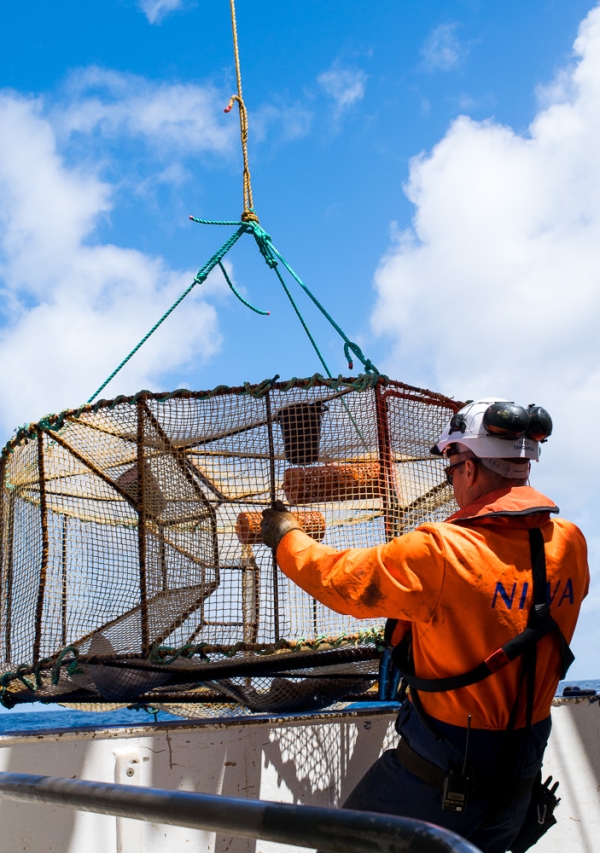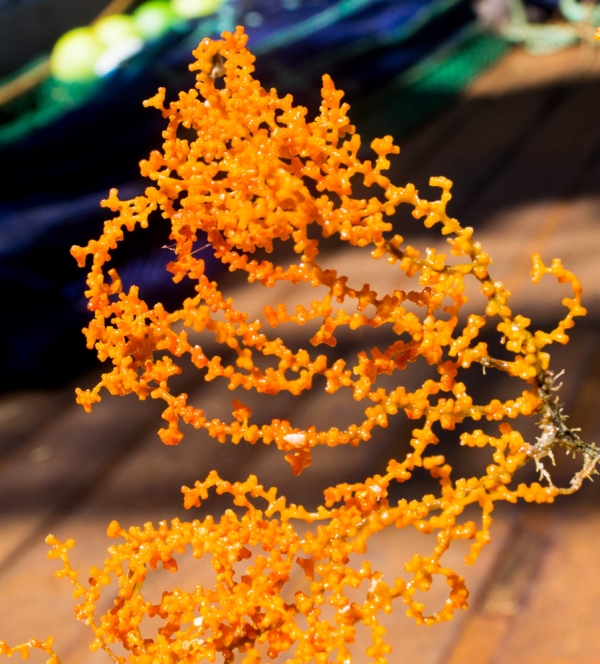7 November 2016
We have reached the end of our sampling program up in the Kermadecs and we’re on our way home. We successfully completed five days sampling at Raoul Island, four days at Macauley Island, four days at L’Esperance Rock and then two days at Star of Bengal Bank. We’ve gone from sampling near a relatively large island, to sampling near a smaller island, then near an island so tiny it was just called a rock, and our final sample site is an underwater bank that doesn’t even break the surface of the ocean.
Following our last sample – a fish trap which caught a number of sharks, including two elusive carpet sharks which made some of the scientists very happy – it was into pack up and cleaning mode. All the sampling equipment, boxes and buckets of preserved samples and assorted laboratory equipment has to be cleaned, packed up and stored ready to be taken off the ship when we get into port in Wellington.
Now it is a flurry of activity on computers as the different scientists compile their lists of samples and write up the required voyage report.
We sampled from a total of 143 stations on this trip. Overall it has been a very successful expedition, and we have been able to complete all the core science objectives we set out to achieve. There are always more activities planned for an expedition such as this, just in case time allows us to fit them in, and the opportunity to sample at the Star of Bengal Bank was a bonus.
There have been some stand out things which have really made this trip special. Firstly, it has been a unique experience to have such a multidisciplinary trip with so many different organisations collaborating together to achieve their research objectives. We have been privileged to see so many humpback whales all around us while we were at Raoul Island many of which the whale team successfully sampled. There have been times of palpable excitement from the fish team as probable new records of species for the Kermadec Region and New Zealand were found.
The dive team has successfully deployed or changed water temperature loggers at Havre and L’Esperance Rocks, and Macauley and Raoul Islands as well as collecting numerous urchins and corals for genetic connectivity studies. Interesting plankton samples await processing once back in the laboratory for the plankton team. The numerous invertebrate samples collected from the deep sea (all 1241 ‘lots’ that were catalogued) are all packed up in buckets ready to be looked at in detail by the various taxonomists on land. There were brightly coloured deep-sea corals, intriguing hermit crabs, multiple different coloured sea cucumbers and many, many more amazing creatures collected.
Currently we are steaming down the east coast of the North Island and before the rain closed in we were watching the Mahia Peninsula slip by our starboard windows.
Over all it has been a really good trip, with a lot of great people all happy to be at sea, however the time has come for us to go home – there are a number of weary scientists (from working 12 hour days for the last 16 days straight) on board who are looking forward to seeing family and friends and sleeping in their own beds.


